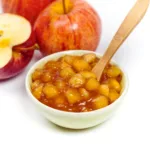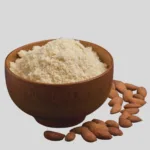Arguably the most popular orange food, there are hundreds of different types of oranges, but you can think of them in terms of 3 different kinds: sweet oranges, bitter oranges, mandarins, and hybrids.
Sweet oranges are the most common type and include varieties such as Navel, Valencia, and Jaffa. Bitter oranges are less commonly eaten fresh due to their bitter flavor but are used in marmalades and liqueurs. Mandarins, tangerines, and clementines are smaller, sweeter, and often easier to peel than common oranges.
Each type of orange has multiple varieties, each with its own unique flavor, size, and characteristics. For instance, among sweet oranges, you’ll find Cara Cara oranges, with their distinctive pinkish-red flesh, or blood oranges, known for their deep red color and raspberry-like flavor.
While it’s difficult to pinpoint the exact number of orange types because new hybrids and cultivars are continually being developed, there’s a world of diversity in the orange family to explore. Some say there are over 400+ types of oranges!
Where Oranges Are Grown
The majority of the world’s oranges are grown in tropical and subtropical regions, with the top producers being Brazil and the United States (specifically Florida and California). In fact, Brazil accounts for about one-third of the world’s total orange production, much of which is used to produce orange juice.
The sunny climates and favorable soil conditions of Florida and California make them ideal for growing various types of sweet oranges. Spain, China, and India also have significant orange production. Each region’s unique climate and growing conditions contribute to the distinct flavor profiles of their oranges, offering us a diverse, global citrus palette to explore.
Oranges vs Lemons vs Grapefruits
As we navigate the citrus family, it’s intriguing to draw comparisons between two of its most popular members – oranges and lemons. While both belong to the same Citrus genus, they have several contrasting features.
Oranges
Oranges, known for their sweet, tangy flavor, are generally larger, and their thick, brightly-colored rind encloses segments full of juice, which is often enjoyed fresh or squeezed into a refreshing drink.
Lemons
On the other hand, lemons, smaller in size, possess a tart flavor profile, making them less likely to be consumed on their own but greatly valued for their zesty contribution to a myriad of dishes, drinks, and desserts. Their thinner, pale yellow rind often contains more essential oil, contributing to the lemon’s distinct aroma. So, while oranges and lemons share a citrusy lineage, the two fruits offer distinctly different culinary roles and sensory experiences, making them both vital inclusions in our kitchens.
Grapefruits
Grapefruits, another noteworthy member of the Citrus family, offer an intriguing blend of sweet, sour, and slightly bitter taste profiles. With their larger size and distinctively colored flesh – ranging from white and yellow to pink and ruby red – grapefruits make a statement in both visual and sensory terms. They tend to have a thicker rind than oranges and lemons, often with a slightly bumpy texture. Nutritionally, they are potent sources of vitamins C and A and are well known for their high antioxidant content.
Scientifically fascinating, the grapefruit is a relatively modern addition to the citrus family, believed to be a hybrid originating from a cross between a pomelo and a sweet orange. Despite their relative bitterness compared to oranges and lemons, grapefruits bring a unique, refreshing flavor that makes them an intriguing element in culinary applications.
Types of Sweet Oranges
Know for their sweet flavor and low acidity, sweet oranges are what you probably reach for in later winter and early spring when you’re body is craving some Vitamin C. Here are the varieties available.
Navel Oranges: Unmistakable with their ‘navel’ at one end, these oranges are a favorite across the globe. Their sweet, seedless nature makes them the perfect portable snack. The thick skin peels easily, revealing juicy segments that pack a punch of citrusy sweetness with a hint of tartness.
Lima Oranges: Also known as the “sweet lemon” or “sweet lime,” isn’t actually an orange despite its name. It belongs to the citrus limetta species, and it’s more closely related to lemons and limes. While its appearance resembles that of a lime or a lemon, they have thick peels and its taste is sweet with less acidity.
Valencia Oranges: Known as the quintessential orange, Valencia oranges reign supreme in the juicing world. Their high juice content and balanced sweetness make them an ideal choice for a refreshing glass of orange juice. Don’t let their occasionally greenish skin fool you; that’s just a natural process called ‘re-greening.’
Cara Cara Oranges: Their blush-toned interior sets Cara Cara oranges apart. The pinkish-red flesh is not only a sight to behold, but it also offers a unique flavor profile, blending the citrusy sweetness of oranges with subtle undertones of cherries and cranberries. They’re a delightful twist on the traditional orange.
Tangelos: Tangelos, often recognized under the brand name “Minneola,” are a hybrid citrus fruit that combines the best characteristics of tangerines and grapefruit. Sporting a deep orange color and a distinctive “knob” at the top, tangelos have a striking appearance that sets them apart.
Blood Oranges: True to their name, Blood oranges boast an intense crimson flesh that’s as flavorful as it is visually striking. Their sweetness is underscored by a hint of raspberry flavor, making these oranges a delightfully tangy treat that’s excellent for desserts, salads, or fresh consumption.
Hamlin Oranges: Compact yet potent, Hamlin oranges may be smaller, but they are a powerhouse of juiciness. Their thin skin encases a pulp that’s bursting with sweet, tangy juice. They’re fantastic for juicing, sure to invigorate your mornings with a citrus splash.
Pineapple Oranges: Don’t be fooled by the name; these oranges don’t look or taste like pineapples. The moniker comes from their incredibly sweet juice, which some liken to pineapple’s sweetness. They’re juicy and brimming with that classic citrus flavor enhanced with an extra touch of sweetness.
Jaffa Oranges: Named after the city of Jaffa in Israel, these oranges are a testament to citrus sweetness. Almost seedless, with a balanced tartness, they’re an excellent choice for those who prefer their oranges sweet, not sour.
Parson Brown Oranges: An older variety predominantly grown in Florida, these oranges are a juice lover’s delight. Their vibrant, tangy flavor makes for a lip-smackingly good glass of juice.
Satsuma Oranges: Hailing from Japan, Satsumas are loved for their seedless nature and easy-to-peel skin. The tender flesh is sweet, with a satisfying citrusy tang, perfect for a fresh snack or a sweet addition to salads.
Ambersweet Oranges: A relative newcomer to the citrus family, Ambersweet is a unique hybrid, often considered an orange-grapefruit cross. Their flavor melds the sweet tanginess of oranges with a faint trace of grapefruit’s characteristic bitterness.
Moro Oranges: A subset of the blood orange family, Moro oranges stand out with their deep, ruby-red flesh. Their flavor is sweet yet zesty, with an unmistakable hint of raspberry.
Trovita Oranges: Trovita oranges offer versatility, suitable for both juicing and direct consumption. Their size is perfect for a quick snack, and their juice is refreshingly sweet.
Robertson Navel Oranges: A variation of the classic navel orange, Robertson navels are a juicy delight. The flesh is sweet and generously juicy, perfect for those who love a succulent, refreshing orange.
Bahia Navel Oranges: Originating from Brazil, Bahia navels are a variety prized for their size and juiciness. These oranges are large, with a flesh that’s both sweet and abundant in juice. Their robust flavor and satisfying juiciness make them a fantastic choice for both eating fresh and juicing.
Types of Bitter Oranges
Bitter oranges, often under-appreciated compared to their sweeter counterparts, offer a world of flavor that can take your culinary experiences to new heights. Known scientifically as Citrus aurantium, these oranges have a distinct tart and bitter taste that adds an exceptional flavor profile to various dishes, marmalades, and liqueurs. Let’s delve into the diversity of bitter oranges:
Seville Oranges: If you’ve ever enjoyed the tangy delight of English marmalade, you’ve tasted Seville oranges. These are the classic bitter oranges that hail from Seville, Spain. With their rough, thick skin and distinctive sour taste, they are culinary stars in their own right.
Bergamot Oranges: These are more aromatic, offering a unique flavor profile that is used to produce the eponymous bergamot oil. This oil is a staple in the beloved Earl Grey tea, giving it its distinct taste and aroma.
Chinotto Oranges: A smaller variety of bitter oranges, Chinotto is grown primarily in Italy. Their rind and juice are often used in traditional Italian sodas and aperitifs, providing a rich, bittersweet flavor.
Sour Oranges: Although this term is often used interchangeably with bitter oranges, Sour Oranges are a category unto themselves. They are favored in traditional medicines and some culinary practices, particularly for their sour juice.
Trifoliate Oranges: Though not directly a bitter orange, the Trifoliate orange is closely related. Its primary use is as a rootstock for other citrus trees. Its fruit can also be used in marmalades.
Calamondin Oranges: Also known as calamansi, this small citrus fruit brings a vibrant sourness to dishes. It is a staple in Filipino cuisine and other Southeast Asian dishes.
Each of these varieties offers a unique flavor profile that can elevate a wide range of culinary creations, from savory dishes to desserts and beverages. It’s time we gave bitter oranges their due attention in our kitchens!
Types of Mandarines
You might have thought that a mandarine orange was just that. But Mandarins, with their diverse array of varieties, offer a unique flavor profile that’s both sweet and tart, with a level of convenience that few fruits can match. No matter the variety you choose, you’re in for a treat that offers not only tantalizing flavors but also numerous health benefits, thanks to their high content of vitamins and antioxidants. Whether you’re looking for a quick, healthy snack or a vibrant addition to your culinary creations, there’s a mandarin variety that’s perfect for you.
Clementines: These “zipper-skinned” citrus fruits are a favorite snack worldwide. Clementines are small, sweet, and seedless, making them a perfect choice for a quick, healthy snack, or a delicious addition to salads and desserts.
Satsumas: Hailing from Japan, Satsuma mandarins are celebrated for their loose skin that peels away effortlessly, revealing juicy, sweet segments. They’re seedless, easy-to-peel, and pack a slightly tart punch that nicely balances their sweetness.
Tangerines: Known for their deep orange color, tangerines are a little more tart than other mandarin varieties. However, they’re still sweeter than oranges, with a distinctive, rich flavor and a fragrance that’s nothing short of invigorating.
Murcotts: Also known as “honey tangerines,” Murcott mandarins live up to their name, delivering an intense sweetness reminiscent of honey. They’re smaller and slightly flattened but are packed with a uniquely sweet, rich flavor.
Dancy Mandarins: Often dubbed the “Christmas tangerine” due to its winter ripening, Dancy mandarins are small, seed-filled, and characterized by a deep, red-orange peel. Their taste is sweet yet tangy, and they offer a delightful aroma that enhances their fresh appeal.
Kumquats: While technically not a mandarin, kumquats are closely related and worth mentioning. They’re tiny citrus fruits that can be eaten whole – skin and all. The sweetness of the skin complements the tartness of the flesh, creating a unique and exciting flavor experience.
Kishu Mini Mandarins: As the name suggests, these mandarins are small – small enough to pop into your mouth whole. But don’t be fooled by their size. These tiny fruits are sweet, seedless, and incredibly flavorful.
Kinnow Mandarins: Originating from India, Kinnow mandarins are a late-ripening variety with a tangy, sweet flavor. They’re slightly larger with a smooth, shiny peel, and the fruit’s high juice content makes it excellent for beverages and citrus-based sauces.
Golden Nugget Mandarins: This variety is celebrated for its knobby skin and incredibly sweet, juicy flesh. The fruit is seedless with a rich, honeyed flavor that makes it a delightful snack or a sweet addition to salads and desserts.
Pixie Mandarins: Pixie mandarins are small, seedless, and exceptionally sweet. They’re late-season fruits, ripening in the spring, and their bright, sweet flavor is a refreshing palate cleanser.
Tango Mandarins: A result of natural mutation, Tango mandarins are seedless with a rich, sweet-tangy flavor. Their vibrant, deep orange skin and lusciously sweet flesh make them a popular variety for snacking.
Sunburst Mandarins: Named for their bright, shiny skin, Sunburst mandarins are seedless, with a balanced sweetness that’s refreshingly tangy. They’re a perfect addition to salads, desserts, or eaten just as they are.
Yosemite Gold Mandarins: This variety boasts large fruits with an exceptional flavor – sweet, with just the right amount of tartness. The peel comes off easily, making them an easy-to-eat, delicious snack.
Shasta Gold Mandarins: Large, seedless, and exceptionally sweet, Shasta Gold mandarins are a premium variety. Their size and incredible flavor make them a perfect fruit for fresh eating or incorporating into recipes.
Temple Mandarins: A hybrid of tangerine and orange, Temple mandarins have a distinctive bell shape. They’re slightly larger than your typical mandarin and boast a bold, rich flavor that strikes a delightful balance between sweetness and tanginess. This variety, with its pebbly skin and juicy, vibrant flesh, is a late-season bloomer that’s worth waiting for.
Most Common Types of Oranges
Depending on where you live in the country or world, here are few of the most common types of oranges.
- Navel Oranges: These oranges are large, sweet, and seedless, named for the belly-button formation opposite the stem end. They are particularly well-suited for consumption out of hand or in salads.
- Valencia Oranges: Often associated with orange juice, Valencia oranges are sweet, juicy, and have a few seeds. They are the most widely planted variety of orange worldwide.
- Cara Cara Oranges: This type of navel orange has a pinkish-red flesh with a flavor that’s distinctively sweet and tangy. They’re also seedless and are known for their lovely rosy flesh.
- Blood Oranges: With their distinct crimson-colored flesh and unique raspberry-like flavor, blood oranges offer a dramatic alternative to the traditional orange varieties.
- Mandarin Oranges: Mandarins are a category of smaller, sweeter, and easier-to-peel oranges which include tangerines and clementines.
Best Months For Oranges
Though oranges are obviously now available year-round, their peak season varies depending on the variety and growing region.
For instance, Navel oranges are typically at their best from late autumn to early spring, providing a burst of sunshine during the cooler months.
Valencia oranges, on the other hand, are a summer fruit, usually coming into their prime from late spring to mid-summer. Similarly, blood oranges have a relatively short season, generally available from December through April.
Mandarins, including varieties like clementines and satsumas, offer their sweetest delight from late autumn to late winter. So, no matter the time of year, there’s likely a type of orange at its peak just waiting to brighten your day with its sunny hue and fresh, juicy flavor.
Types of Oranges FAQs
Are Cuties and Halo brands or oranges or varieties?
“Cuties” and “Halos” are not specific varieties of oranges, but rather brand names for a type of mandarin oranges. These brands typically sell seedless, easy-to-peel mandarins, which are a hit with kids and adults alike for their sweet flavor and convenient size.
The fruit sold under these brands can be different varieties of mandarins depending on the season. For instance, Clementines are often sold under these brand names during the early part of the citrus season (from November to January), and later in the season (from February to April), you’re more likely to find W. Murcott mandarins or Tango mandarins.
So, when you’re buying “Cuties” or “Halos,” you’re not buying a specific variety of orange, but rather a type of mandarin orange that’s been selected for its taste and convenience, and marketed under a brand name.
How many different kinds of oranges are there?
There are over 400 different types of orange. Many of these are hybrids that have been created over the past century or so.
What is the sweetest orange in the world?
The “Cara Cara” orange (as mentioned above) a type of navel orange, is often hailed as the sweetest orange variety. Its flesh is distinctively pinkish-red, and the flavor combines sweetness with hints of tang, often described as having notes of cherry, rose petal, and cranberry. This low-acid fruit is not just sweet but also complex, offering a depth of flavor that has made it a favorite among citrus lovers worldwide.
What is the rarest orange color?
In the world of oranges, the rarest color might be considered blue. Yes, you heard it right, blue! The “blue java banana,” also known as the “ice cream banana,” has a peeling that is a silvery-blue color and a taste that’s reminiscent of vanilla ice cream. However, it should be noted that this is not a typical orange and it’s more related to bananas.
As far as conventional oranges are concerned, the color variation isn’t as wide. They are typically in hues of orange, though the intensity can vary from light orange to deep, almost red-orange, depending on the variety. The flesh color can vary even more, with some like the blood orange featuring an unusual, but not rare, dark red interior. The rarest might be those with a greenish-yellow rind, such as the Bergamot orange, primarily grown for its peel and aromatic oils rather than for its pulp.
Oranges Recipes
If you like the above recipe, you’ll love our recipe for Empress Chicken!
More Fruit-Related Content
Blueberry Custard Pie Recipe
All About Black Foods
How to Freeze Blueberries (For Any Use)
66 Brown Foods to Know
What Does Guava Taste Like?
What Does Dragon Fruit Taste Like?
Have questions or suggestions about different types of oranges? Leave them in the comments below.












